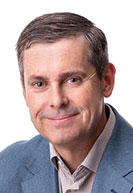Subscriber Benefit
As a subscriber you can listen to articles at work, in the car, or while you work out. Subscribe Now
Indianapolis-based Eli Lilly and Co. will begin studies to see if its blockbuster weight-loss medicines are also effective at controlling addictive behaviors such alcohol abuse, smoking and drug addiction, CEO Dave Ricks said Tuesday.
The drugs are “anti-hedonics,” Ricks said during an interview with David Rubenstein at a meeting of the Economics Club in Washington, D.C., and may offer patients respite from their dependence. Some doctors already swear by the shots to help ease cravings, and Lilly’s rival Novo Nordisk A/S said earlier this year it was also planning studies in addiction.
Since launching obesity treatment Zepbound in December 2023, Lilly has been overwhelmed by demand for the drug, as well as for diabetes treatment Mounjaro, which launched in May 2022.
Lilly reported $3.1 billion in Mounjaro sales and $1.26 billion of Zepbound sales in the third quarter alone.
“These medicines can be useful for other things we don’t think about connected to weight,” Ricks said. “They’re reducing that desire cycle. So next year, you’ll see Lilly start large studies in alcohol abuse and nicotine use, even in drug abuse.”
Ricks also addressed the imbalance in drug prices between the United States and other countries, saying that patients abroad should be paying more for their medicines. That’s an argument previously floated by President-elect Donald Trump during his first administration and will likely come back, Ricks said.
$15 billion share buyback
Lilly on Monday approved a program to buy back as much as $15 billion of its own shares amid rapid growth fueled by Zepbound and Mounjaro.
The company also raised its quarterly dividend 15%, the company said Monday. The dividend is payable on March 10 to shareholders of record at the close of business on Feb. 14.
The company’s prior $5 billion share repurchase program was completed this quarter, Lilly said.
Lilly’s stock has risen 37.9% so far this year compared with an increase of 9.5% for the industry, according to Zacks Equity Research. The success of Lilly’s Mounjaro and Zepbound has made it the largest drugmaker, with a market cap of more than $780 billion.
Lilly shares were trading at $802.76 on Tuesday afternoon.
“As Lilly has entered into a period of rapid growth, our capital allocation priorities remain the same. We will continue to focus on supporting new launches, expanding our manufacturing capacity, and advancing our pipeline through research and development and business development,” said Lucas Montarce, Lilly executive vice president and chief financial officer, in written comments. “However, given the strong growth profile of the company, we’re also increasing the amount of capital we plan to return to shareholders. We expect to execute this program over the next three years.”
The share repurchases may be made from time to time at management’s discretion, Lilly said.
Speaking Tuesday, Lilly CEO David Ricks fielded a question about the buyback from Economic Club moderator David Rubenstein, co-founder and co-chair of private equity firm The Carlyle Group:
Rubenstein: Yesterday, you announced a $15 billion stock buyback. Many people criticize stock buybacks. They say you should use your money to invest in your products and so forth. How do you respond to that?
David Ricks: Yeah, I don’t understand that argument. Really, a stock buyback is a way to essentially, by buying your own shares, you give the people who already own your shares the opportunity to sell at a higher price and get a return on their investment. I don’t know why that’s bad, but I would also point out, in our current situation, we’re spending almost more than anyone in the world on R and D already will spend 11-1/2 billion dollars this year on research and development. By the way, the country of Germany spends about eight and a half billion on all of its medical R and D. That’s their NIH equivalent. So we’re at the nation state scale on R and D, where we have announced investments of $23 billion in new capital in the United States for factories. We can’t go faster. There’s no more vendors to build plants faster than we’re building right now. So returning some of the rewards that investors deserve for taking risk on the company seems like a reasonable thing to do.
Please enable JavaScript to view this content.
